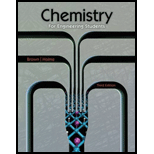
Concept explainers
(a)
To determine:
The complete equation for the given radioactive decay and identify the missing particle
(a)
Explanation of Solution
Because this is an alpha decay, the helium nucleus is ejected with decrease in mass number by 4 and
(b)
To determine:
The complete equation for the given radioactive decay and identify the missing particle
(b)
Explanation of Solution
In case of alpha decay, the helium nucleus is ejected. By balancing the mass numbers of products with that of a parent nuclei, the mass number of missing particle is
(c)
To determine:
The complete equation for the given radioactive decay and identify the missing particle:
(c)
Explanation of Solution
In the given equation, balancing the mass number and atomic number of the product and reactant sides, we get, the mass number of missing particle is
(d)
To determine:
The complete equation for the given radioactive decay and identify the missing particle
(d)
Explanation of Solution
By balancing the mass numbers of products with that of parent nuclei, the mass number of missing particle is
(e)
To determine:
The complete equation for the given radioactive decay and identify the missing particle
(e)
Explanation of Solution
In case of neutron decay, the mass number gets reduced. By balancing the mass numbers of products with that of parent nuclei, the mass number of missing particle is
(f)
To determine:
The complete equation for the given radioactive decay and identify the missing particle:
(f)
Explanation of Solution
In the given equation, balancing the mass number and atomic number of the product and reactant sides, we get, the mass number of missing particle is
Therefore, if one of the species from the radioactive decay equation is missing, it can be determined by balancing atomic numbers and
Want to see more full solutions like this?
Chapter 14 Solutions
Chemistry for Engineering Students
 Introductory Chemistry: A FoundationChemistryISBN:9781337399425Author:Steven S. Zumdahl, Donald J. DeCostePublisher:Cengage Learning
Introductory Chemistry: A FoundationChemistryISBN:9781337399425Author:Steven S. Zumdahl, Donald J. DeCostePublisher:Cengage Learning Chemistry: The Molecular ScienceChemistryISBN:9781285199047Author:John W. Moore, Conrad L. StanitskiPublisher:Cengage Learning
Chemistry: The Molecular ScienceChemistryISBN:9781285199047Author:John W. Moore, Conrad L. StanitskiPublisher:Cengage Learning World of Chemistry, 3rd editionChemistryISBN:9781133109655Author:Steven S. Zumdahl, Susan L. Zumdahl, Donald J. DeCostePublisher:Brooks / Cole / Cengage Learning
World of Chemistry, 3rd editionChemistryISBN:9781133109655Author:Steven S. Zumdahl, Susan L. Zumdahl, Donald J. DeCostePublisher:Brooks / Cole / Cengage Learning General, Organic, and Biological ChemistryChemistryISBN:9781285853918Author:H. Stephen StokerPublisher:Cengage Learning
General, Organic, and Biological ChemistryChemistryISBN:9781285853918Author:H. Stephen StokerPublisher:Cengage Learning Chemistry: Principles and PracticeChemistryISBN:9780534420123Author:Daniel L. Reger, Scott R. Goode, David W. Ball, Edward MercerPublisher:Cengage Learning
Chemistry: Principles and PracticeChemistryISBN:9780534420123Author:Daniel L. Reger, Scott R. Goode, David W. Ball, Edward MercerPublisher:Cengage Learning





